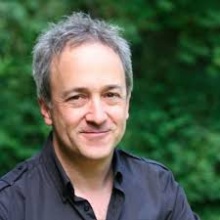How Evolution and Environment Shape Cancer

Michael Hochberg
ISEM, Montpellier , France - mhochber@univ-montp2.fr
(Seminar in English)
Abstract. Evolutionary theory explains why metazoan species are largely protected against the negative fitness effects of cancers. Nevertheless, cancer is observed across a range of species and sometimes at high prevalence. I first describe the basis of “Peto’s paradox”: the observation that cancer risk across species does not change with either longevity or body size. I then present a simple model showing how life history traits (e.g., body size) are expected to coevolve with anti-cancer mechanisms. The insights of this model form the basis for understanding cancer sensitivity and resistance in three mammals with contrasting life histories: mice, elephants and naked mole rats. One of the interesting findings for these and other species is the potential role played by novel environments in cancer risk. To explore this further, different human tissues are viewed as “species”, and I present an analysis showing that--as for mammal species--Peto’s paradox is observed across tissue types. With this observation, we propose a framework for extracting baseline cancer risk from exacerbation or attenuation due to novel environments.
Recent publications:
Noble R, Kaltz O & Hochberg ME. 2015. Peto’s paradox and human cancers. Phil. Trans. R. Soc. B 370, 20150104
Hochberg ME, Noble RJ & Braude S. 2016. A hypothesis to explain cancers in confined colonies of naked mole rats. BioRxiv doi: https://doi.org/10.1101/079012
Hochberg ME & Noble RJ. 2017. A framework for how environment contributes to cancer risk. Ecology Letters 20:117-134.
Alison Duncan; alison.duncan@umontpellier.fr
Contact du Comité SEEM: seem@services.cnrs.fr. Contact du Labex CEMEB: gestion.cemeb@univ-montp2.fr


